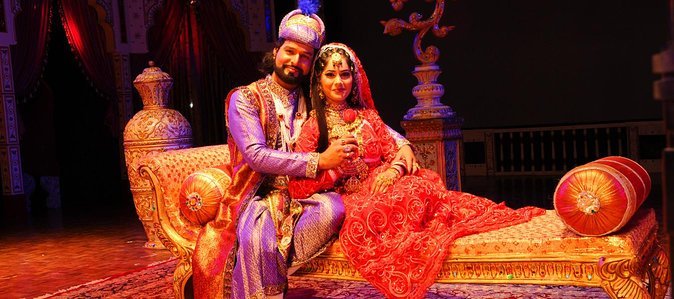Recent historical research has shed light on the lesser-known aspects of Mumtaz Mahal’s life, including her birth name. It has been revealed that Mumtaz Mahal was born as Arjumand Banu Begum on April 27, 1593, in Agra, India. This discovery offers a deeper understanding of her early life and background, providing valuable insights into the woman behind the iconic figure immortalized in the Taj Mahal.
Also you like to read Taj Mahal History and Facts: A Comprehensive Guide
Arjumand Banu Begum’s transformation into Mumtaz Mahal upon her marriage to Mughal Emperor Shah Jahan symbolizes the cultural and social conventions of her time. Unraveling her real name adds another layer of complexity to her story, highlighting the intricacies of identity and legacy in the context of the Mughal Empire.
Arjumand Banu Begum family
Mumtaz Mahal, revered as one of the most beloved figures in Indian history, was born as Arjumand Banu Begum on April 27, 1593, in Agra, India. She was the daughter of Asaf Khan, a prominent noble in the Mughal court, and grew up in a life of luxury and privilege. Renowned for her beauty, intelligence, and grace, Arjumand Banu Begum captured the heart of Mughal Emperor Shah Jahan, leading to their legendary marriage in 1612.
“The relationship between Shah Jahan and Mumtaz Mahal was characterized by deep love, mutual respect, and profound devotion..”
Upon her marriage to Shah Jahan, Arjumand Banu Begum was bestowed with the title “Mumtaz Mahal,” which translates to “Chosen One of the Palace.” As Mumtaz Mahal, she ascended to the position of Empress of the Mughal Empire and played a pivotal role in court affairs. Her legacy extends beyond her title, as she is best remembered for her philanthropy, compassion, and enduring love for Shah Jahan, which culminated in the construction of the iconic Taj Mahal in her honor.

Mumtaz Mahal spouse details
Mumtaz Mahal’s spouse was none other than the renowned Mughal Emperor Shah Jahan. Born as Prince Khurram, Shah Jahan was the third son of Emperor Jahangir and was destined for greatness from an early age. His marriage to Mumtaz Mahal in 1612 marked the beginning of a legendary love story that would captivate hearts for generations to come. As Emperor, Shah Jahan held immense power and authority, but it was his deep affection and devotion to Mumtaz Mahal that truly defined his reign.
Throughout their marriage, Shah Jahan and Mumtaz Mahal shared a profound bond built on mutual respect, admiration, and love. Mumtaz Mahal’s influence on Shah Jahan’s life and reign was significant, as she played an active role in court affairs and supported her husband in his endeavors. Their partnership exemplified the ideals of companionship and unity, leaving an indelible mark on the history of the Mughal Empire.
- Mumtaz Mahal biography – Mumtaz Mahal, born as Arjumand Banu Begum on April 27, 1593, in Agra, India, was the beloved wife of Mughal Emperor Shah Jahan. Renowned for her beauty, intelligence, and grace, Mumtaz Mahal played a significant role in the Mughal court and was known for her philanthropy and compassion. Tragically, she passed away on June 17, 1631, during childbirth, leaving Shah Jahan devastated. Her legacy is immortalized through the iconic Taj Mahal, a symbol of their eternal love.
- Mumtaz Mahal historical – Mumtaz Mahal occupies a prominent place in history as the Empress of the Mughal Empire during the 17th century. Her life, marked by beauty, intelligence, and compassion, is intertwined with the cultural and architectural legacy of the era. Mumtaz Mahal’s untimely death in 1631 prompted the construction of the Taj Mahal, a magnificent mausoleum that stands as a testament to enduring love and architectural brilliance. Her historical significance resonates through the annals of time, immortalized in the hearts of those who admire the grandeur of her legacy.
- Mumtaz Mahal secrets – Mumtaz Mahal’s life is veiled in intriguing secrets that continue to captivate historians and enthusiasts alike. While her public persona as the beloved Empress of the Mughal Empire is well-documented, her private thoughts and emotions remain shrouded in mystery. Speculation surrounds the details of her relationship with Shah Jahan and the true extent of her influence in court affairs. Uncovering Mumtaz Mahal’s secrets offers a glimpse into the complexities of her character and the nuances of her historical legacy.
- Mumtaz Mahal Taj Mahal – Mumtaz Mahal, the beloved wife of Mughal Emperor Shah Jahan, inspired the creation of the Taj Mahal, one of the world’s most iconic monuments. Commissioned by Shah Jahan in her memory, the Taj Mahal is a breathtaking mausoleum that stands as a symbol of eternal love. Mumtaz Mahal’s untimely death prompted Shah Jahan to immortalize her legacy through this magnificent architectural marvel, which continues to mesmerize visitors from around the globe. The Taj Mahal remains a poignant testament to the enduring bond between Shah Jahan and Mumtaz Mahal, transcending time and space with its timeless beauty.
What is the significance of Mumtaz Mahal in Indian history?
Mumtaz Mahal holds immense significance in Indian history as a symbol of love, devotion, and cultural richness. As the beloved wife of Mughal Emperor Shah Jahan, Mumtaz Mahal played a crucial role in shaping the socio-political landscape of the Mughal Empire during the 17th century. Her influence extended beyond the confines of the royal court, as she championed various philanthropic causes and advocated for the welfare of women and children. Mumtaz Mahal’s compassion, intelligence, and grace endeared her to the people of the empire, leaving an indelible mark on the collective consciousness of Indian society.
Furthermore, Mumtaz Mahal’s legacy is immortalized through the Taj Mahal, a masterpiece of Mughal architecture and one of the world’s most iconic landmarks. Commissioned by Shah Jahan in her memory, the Taj Mahal stands as a symbol of eternal love and devotion. Its majestic beauty and intricate craftsmanship continue to inspire awe and admiration, drawing millions of visitors from across the globe. Mumtaz Mahal’s significance in Indian history lies not only in her role as Empress but also in the enduring legacy of the Taj Mahal, which serves as a testament to her enduring impact on the cultural heritage of India.

How did Mumtaz Mahal influence the construction of the Taj Mahal?
Mumtaz Mahal’s profound influence on the construction of the Taj Mahal cannot be overstated. As the beloved wife of Mughal Emperor Shah Jahan, Mumtaz Mahal held a special place in his heart, and her untimely death in 1631 left him devastated. In his grief, Shah Jahan was determined to honor Mumtaz Mahal’s memory in a grand and enduring manner. He envisioned the Taj Mahal as a magnificent mausoleum that would serve as a testament to their eternal love and devotion. Mumtaz Mahal’s role in inspiring this vision cannot be understated, as she was the driving force behind Shah Jahan’s determination to create a masterpiece that would stand the test of time.
Furthermore, Mumtaz Mahal’s influence extended beyond mere inspiration. She actively participated in the design and planning process of the Taj Mahal, offering her insights and preferences to the architects and artisans involved in its construction. Mumtaz Mahal’s exquisite taste and refined sensibilities guided the selection of materials, the layout of the gardens, and the overall aesthetic of the monument. In essence, Mumtaz Mahal’s vision and guidance played a pivotal role in shaping the Taj Mahal into the architectural marvel that it is today, ensuring that her legacy would endure for generations to come.
Also you like to read How many days should you stay in Agra to see all the sights?
Mumtaz Mahal’s real name was Arjumand Banu Begum. She was born on April 27, 1593, in Agra, India, and was the daughter of Asaf Khan, a prominent noble in the Mughal court. Renowned for her beauty, intelligence, and grace, Arjumand Banu Begum later became known as Mumtaz Mahal upon her marriage to Mughal Emperor Shah Jahan.
Mumtaz Mahal changed her name from Arjumand Banu Begum upon her marriage to Mughal Emperor Shah Jahan. This renaming was a common practice in Mughal tradition, symbolizing the bride’s transition into her new role as Empress. The title “Mumtaz Mahal,” meaning “Chosen One of the Palace,” reflected her elevated status and significance within the imperial household.
Yes, Mumtaz Mahal was indeed a historical figure. She was the wife of Mughal Emperor Shah Jahan and played a significant role in the Mughal court during the 17th century. Mumtaz Mahal’s influence, particularly in matters of philanthropy and cultural patronage, is well-documented in historical records and accounts of the time.
You can learn more about Mumtaz Mahal’s life by exploring historical books and articles focusing on the Mughal Empire and the reign of Shah Jahan. Visiting museums such as the Taj Museum in Agra, India, can provide valuable insights into Mumtaz Mahal’s life and the construction of the Taj Mahal. Additionally, online resources and academic journals dedicated to Mughal history offer comprehensive studies on Mumtaz Mahal’s role in shaping the cultural and social fabric of her time.
Mumtaz Mahal was married to Mughal Emperor Shah Jahan. Born as Prince Khurram, Shah Jahan was the third son of Emperor Jahangir. Their marriage in 1612 marked the beginning of a legendary love story that culminated in the construction of the iconic Taj Mahal.
Explore the captivating love story between Mumtaz Mahal and Mughal Emperor Shah Jahan, a tale of passion, devotion, and tragic romance. Learn about the royal family of the Mughal Empire and their influence on the cultural and architectural landscape of Agra, India. Discover the profound impact of Mumtaz Mahal’s untimely death on Shah Jahan and the subsequent construction of the Taj Mahal as a monument to their eternal love.
Uncover the hidden gems of history as you immerse yourself in the legacy of Mumtaz Mahal, whose real name, Arjumand Banu Begum, reflects the depth of her identity beyond her title as Empress. From the grandeur of the Taj Mahal to the intricacies of the Mughal court, delve into the rich tapestry of Indian history and the enduring significance of Mumtaz Mahal as a symbol of love and devotion. Click here now to uncover the secrets of this remarkable historical figure and her timeless connection to the Taj Mahal.
Discover the real name of Mumtaz Mahal, the woman behind the Taj Mahal. Uncover the secrets and mysteries surrounding this historical figure. Click here now!
#MumtazMahal #TajMahal #MughalEmpire #IndianHistory #ShahJahan #LoveStory #TragicRomance #RoyalFamily #AgraIndia #HistoricalFigure #EnigmaticEmpress #ArjumandBanuBegum
https://alamgirtajmahalguide.com/mumtaz-mahal-real-name/




























